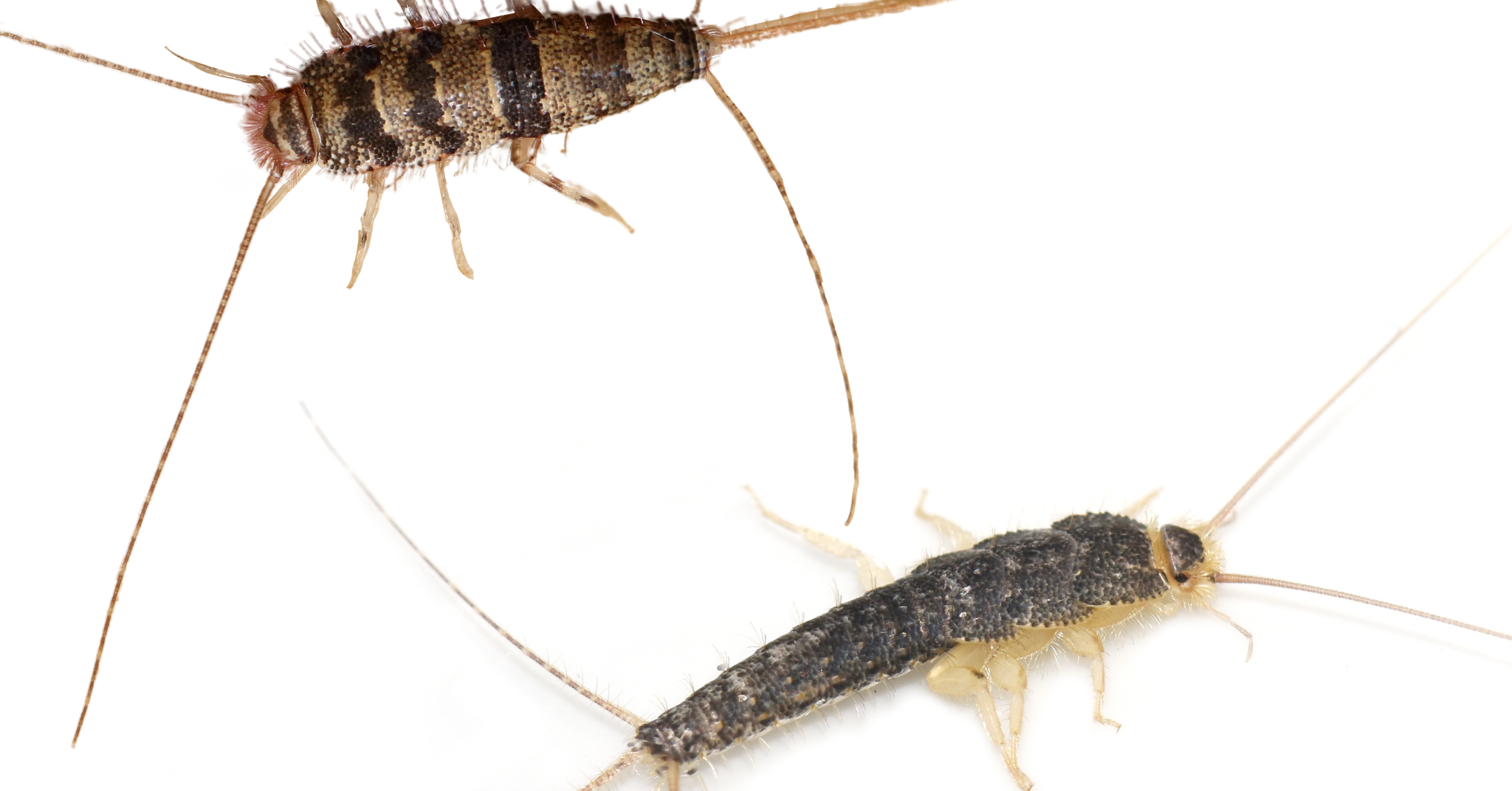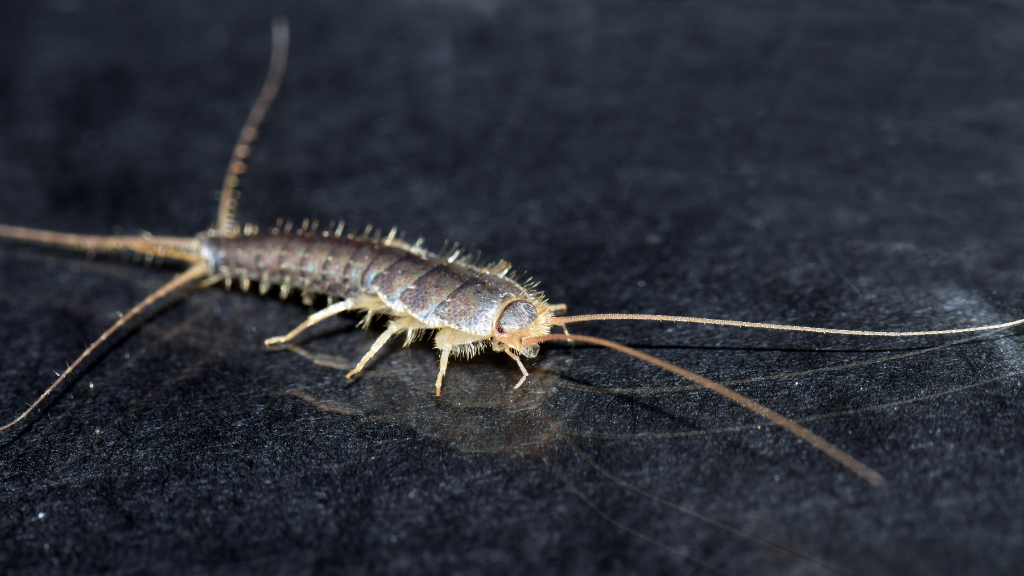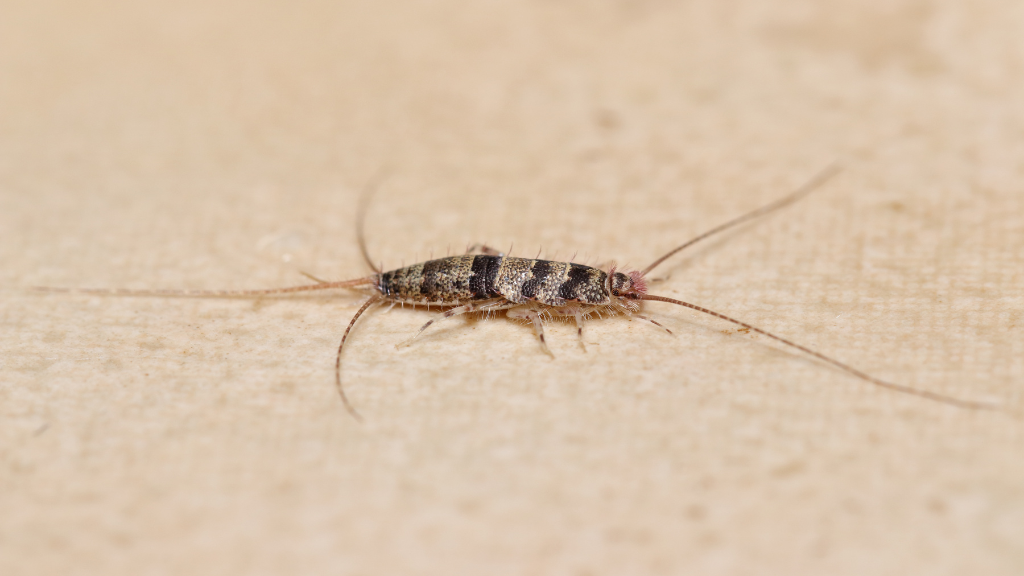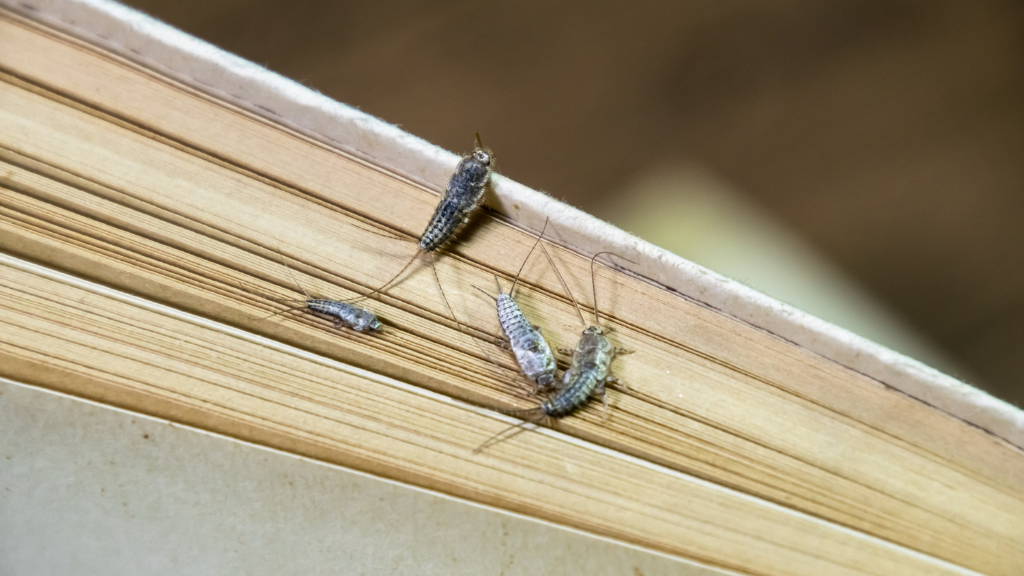Firebrats vs. Silverfish

They’re small, wingless, slender, and, ultimately, creepy. Remarkably similar, firebrats and silverfish are tricky to distinguish one from another. These insects, often called bristletails because of the tail-like attachments to their rear abdomen, are incredibly common household nuisances.
While they’re not toxic or known to carry diseases, a swarm of these pests can do their worst when it comes to dry goods, books, clothing, and wallpaper. Knowing their differences is crucial when taking the correct steps for proper control.
SPOT THE DIFFERENCES
At first glance, categorizing which of these insects is scuttling toward your pantry seems complex. While very similar, note these important differences to more easily distinguish which pest you have on your hands.
SIZE AND APPEARANCE

SILVERFISH: Aptly named, silverfish have a silvery, often bluish or grey appearance. Though the average adult silverfish is ½ inch long, they can grow to be ¾ inch in length. Silverfish have two long antennae emerging from the front of their flat, scaly, carrot-like bodies. These antennae will grow to the length of their bodies and won’t typically extend any longer.

FIREBRATS: These pests, similar to silverfish, grow to be up to ½ inch long at most with two lengthy antennae on their tapered bodies. Their antennae, however, will likely be longer than the length of their body. Their bodies also feature brown and grey scales along their length, giving them a mottled or speckled appearance.
MOVEMENT
SILVERFISH: You will very rarely see silverfish during the day, if at all—these pests are nocturnal. They can move quite swiftly away from sunlight or hazards, usually traveling in a fish-like, swimming motion sideways instead of forward. Their thin bodies enable them to take cover in very small places, especially during the daylight hours. They’re likely to be hiding out in dark, damp places with higher humidity such as under sinks, around pipes, in basements, and near bathtubs or showers.
FIREBRATS: Also nocturnal, firebrats are active almost exclusively in the dark. As their name suggests, they’re drawn to dark places with high heat, favoring spots over 90 degrees Fahrenheit such as dryers, near furnaces, water heaters, attics, ovens, and even under roof shingles in warmer months. If their hiding spot is uncovered, they’ll dart quickly, often traveling sideways like silverfish, to the nearest shadowed, heated area they can find. Unlike silverfish, firebrats are capable of tolerating drier areas with lower humidity, so they won’t always be in a spot with extra moisture.
BEHAVIOR
SILVERFISH: These insects are terribly resilient. Silverfish can live up to three years and survive for weeks without water and nearly a year on water alone without food. Silverfish lay their eggs among dust or dried food to sustain their offspring upon hatching. These pests can feast on protein or starches, glue, book bindings, wallpaper, and items high in sugar and starch such as oats, flour, and cereals. Most likely, though, you’ll know you’ve had a few silverfish visitors by their distinct pepper-like droppings found in areas they’re likely to feed.
FIREBRATS: While they don’t live quite as long, their maximum two-year life span is nothing to scoff at. The firebrat diet is similar to silverfish, but these pests will also munch on various protein-rich sources like dog food, meat scraps, and other dead insects. Their egg-laying habits are akin to silverfish, but their heat-seeking ways bring them to hot spots to harbor their young. Their scales and droppings can leave yellowish stains behind on the paper, fabric, and surfaces they frequent.
KNOW THE SIGNS
Because they’re both small and nocturnal, silverfish and firebrats in your home often go unseen. You may, however, be able to spot signs that you have these insects around.
INVESTIGATE HIDING PLACES
Each of these insects, while not poisonous themselves, can contaminate food, books, clothing, and other areas with their droppings or scales. Additionally, a larger infestation of either type of bristletail insect can result in damage to wallpaper, books, and other objects they get their jaws on. Neither insect is a welcome presence in your home, whether you know they’re around or not.
Silverfish and firebrats find shelter in remarkably similar places, but temperature is your biggest clue when uncovering each of these insects. Take a flashlight and check near any pipes, behind baseboards, and around the potential hiding spots where each type might be tucked away, checking in hotter spots for firebrats and more moderate areas for silverfish. Remember that both tend to seek moisture, so start in areas with higher moisture.
CHECK FOR DAMAGE
Some of the most common signs of a slew of silverfish or a few firebrat families hanging around are the telltale holes and rips in odd objects due to their affinity for things containing adhesive. Silverfish and firebrats are willing to venture longer distances to get a bite, so their nests may be near damaged areas or further away. Take note of where the damaged objects are and start looking in the vicinity for potential hiding spots, then work your way out from there.
HOW CAN I PREVENT SILVERFISH OR FIREBRATS?
MAKE THE AREA LESS HOSPITABLE
Both silverfish and firebrats need safe places to nest, so as many of these places you eliminate, the less likely you will have swarms of insects in your midst. Repairing any leaking pipes, eliminating moisture in laundry areas, and sealing cracks and crevices will cut down on probable shelters. Fans and dehumidifiers are these insects’ worst nightmare, so placing these near any spots harboring firebrats or silverfish will send them looking elsewhere.
SCALE DOWN SNACKS
Since these pests are likely in your home for food, doing all that you can to remove or reduce these sources will cut down their numbers. In addition to cleaning obvious places like kitchens and pantries, take the vacuum to your closet corners, beneath appliances, under rugs, and in the backs of cabinets, too, sealing the vacuum bag after use and disposing of it securely and safely away from your home. Properly store or remove old books and newspapers, and if you catch these insects in the act, seal the book they’re snacking on in a plastic bag and place it in the freezer to wipe them out.
CALL FOR BACKUP
If hunting bugs with a flashlight sounds unappealing, a pest control professional can step in. Silverfish and firebrats aren’t dangerous to humans, but their presence is a nuisance and they can contaminate sacks of flour, destroy heirloom books, and nest in places they’re not wanted. Whether it’s silverfish or firebrats, our pest control experts will be able to identify and design a control plan for infestations large or small.




